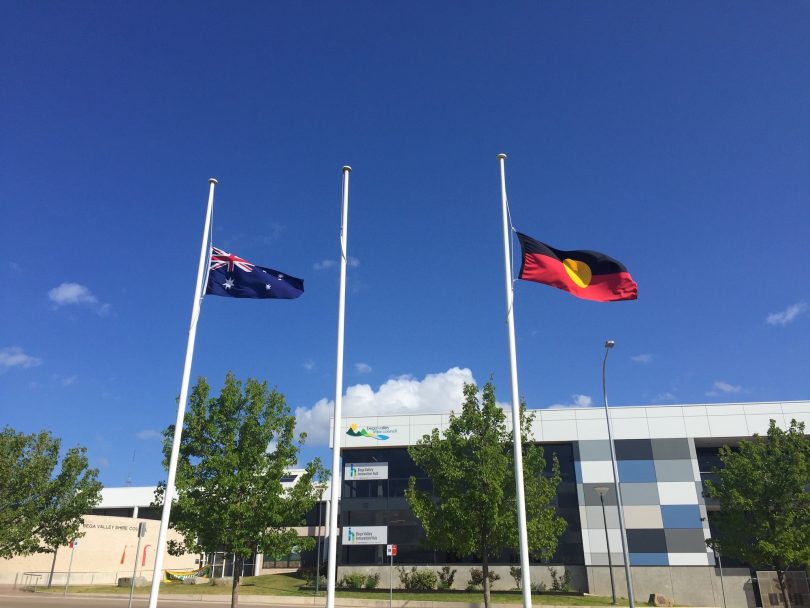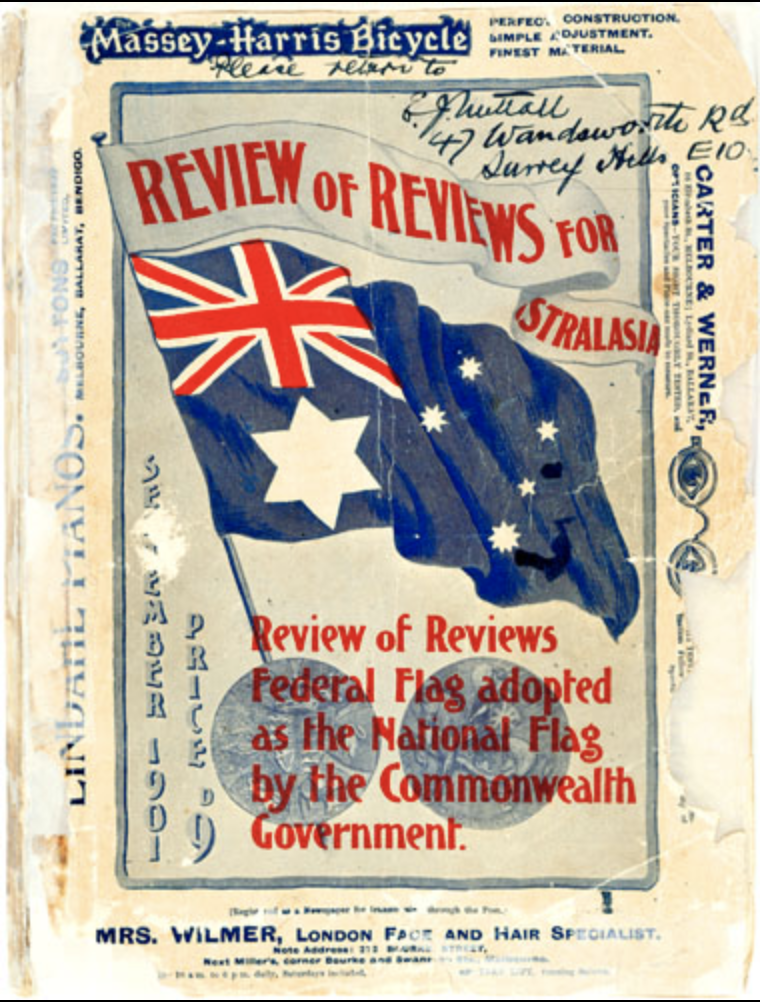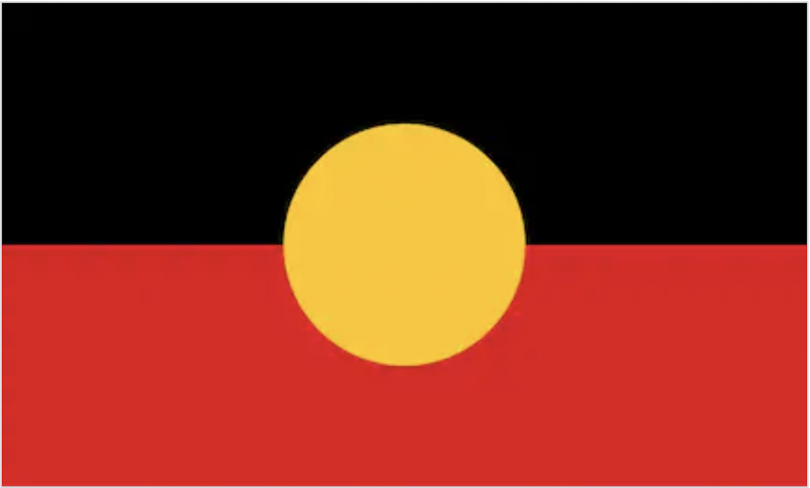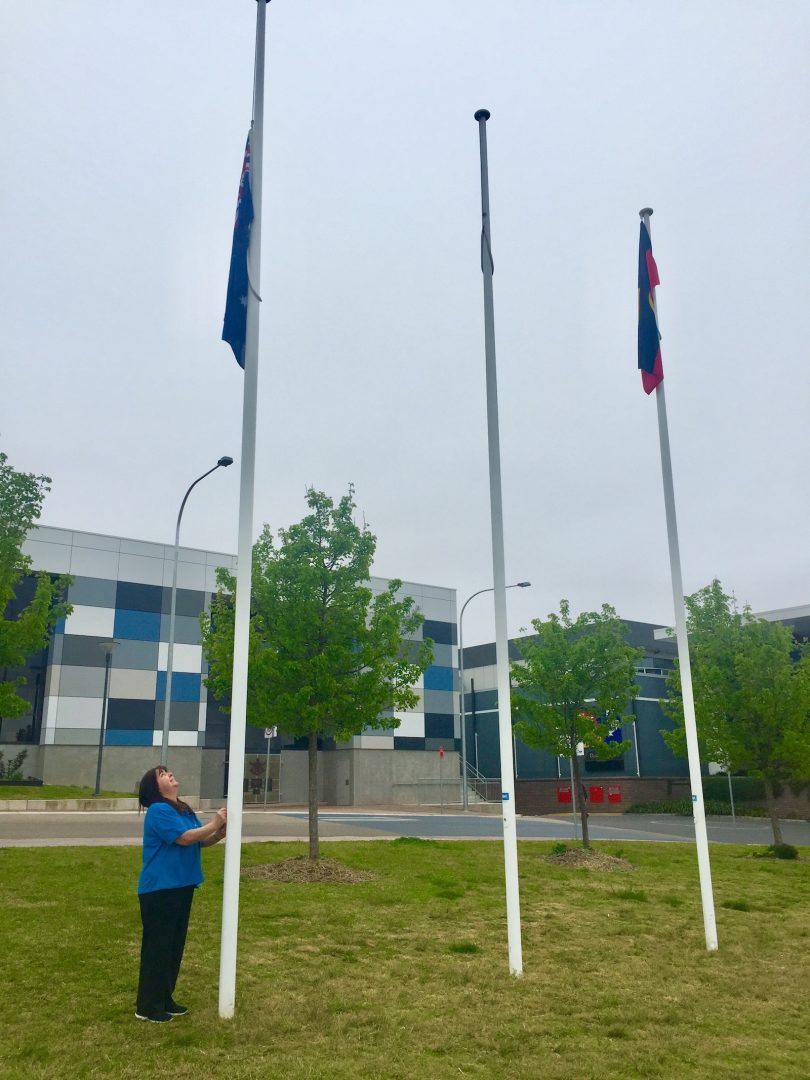
There are strict protocols for flying flags at half-mast. Photo: Lisa Herbert
“Why are our flags being flown at half-mast today?” I asked my nearby colleagues one day in September.
No one knew the answer, so I lurked around the flag masts that reside in front of the Bega Valley Shire Council offices, hoping to catch the mysterious ‘flag-raiser’ in action. Which I did.
Kym Brannan and other council employees take it in turns to raise and lower our flags each day according to the extensive ‘National Flag Protocols‘, which include ‘not raising the flag earlier than first light or lowering the flag later than dusk’.

The ‘Review of Reviews’ front cover, after the winning designers of the 1901 Federal Flag design competition were announced. Photo: Wikipedia
“One of us raises the flags each morning, but I’m out here again making an adjustment as we can’t fly one national flag lower than another. If it’s to be half-mast they’re all at half-mast.”
And so I asked Kym who had died?
“Tonga’s Prime Minister Akilisi Pohiva has died, and the funeral is today,” Kym tells me.
On investigating the world of flags I found that the intrinsic parts or elements have highly significant meanings and speak to my design sensibilities.
The flag of Australia is based on the British maritime Blue Ensign – a blue field with the Union Jack in the canton or upper hoist quarter – augmented with the large white seven-pointed Commonwealth Star and a representation of the Southern Cross constellation, made up of five white stars – one small five-pointed star and four, larger, seven-pointed stars.
The flag’s original design (with a six-pointed Commonwealth Star) was chosen in 1901 from entries in a competition held following Federation and was first flown in Melbourne on September 3 1901.
The Australian Aboriginal Flag was designed in 1971 by Aboriginal artist Harold Thomas, who is descended from the Luritja people of Central Australia and holds intellectual property rights to the flag’s design.
The flag was originally designed for the land rights movement and has become a symbol of the Aboriginal people of Australia.
The symbolic meaning of the Aboriginal Flag’s colours, as stated by Harold Thomas, “Black which represents the Aboriginal people of Australia. The central yellow circle represents the Sun, the giver of life and protector. Red represents the red earth, the red ochre used in ceremonies and Aboriginal peoples’ spiritual relation to the land.”

The Australian Aboriginal Flag was designed in 1971 by Aboriginal artist Harold Thomas Photo: Wikipedia
The Aboriginal Flag, along with the Australian National Flag, is always found flying freely in front of local council or government buildings. But as Kym will testify, you don’t just ‘run the flag up the pole’, there are strict protocols to be followed.
Australian National Flag Protocols state that ‘as one of Australia’s most important symbols, the flag should be used with respect and dignity’.

To fly half mast flags must first be raised to the top, then ceremoniously lowered. Photo: Lisa Herbert
If you are going to fly our flags, you need to abide by these protocols, which include the following:
- Raise the flag briskly and lower it ceremoniously;
- Do not raise the flag earlier than first light or lower the flag later than dusk;
- The flag should always be flown freely and as close as possible to the top of the flagpole with the rope tightly secured;
- The Australian National Flag should be raised first and lowered last, unless all other flags at the ceremony are raised and lowered simultaneously;
- The Australian National Flag should fly on the left of a person facing the flags, when it is flown with one other national flag;
- Do not fly two flags from the same flagpole;
- Only fly the flag at night when it is illuminated;
- Do not fly the flag if it is damaged, faded or dilapidated;
- Do not allow the flag to fall or lie on the ground or be used as a cover, although it can be used to cover a coffin at a funeral.
Flags are flown at half-mast as a sign of mourning, both nationally and locally, and of course, there are protocols for this too:
- The flag must be lowered to a position recognisably half-mast to avoid the appearance of a flag which has accidentally fallen away from the top of the flagpole;
- And, when lowering the flag from a half-mast position it should be briefly raised to the peak and then lowered ceremoniously.
The main concern for Kym, Nicola and other council staff who are charged with flag duties is that the flag not touch the ground, especially in view of the public.
“This can be quite challenging when its cold and raining, juggling umbrellas and lowering the flag ceremoniously!”
But they deal with it and get the flags safely inside, neatly folded in their special spot in Team Leader Kylie McGuffick’s office.







